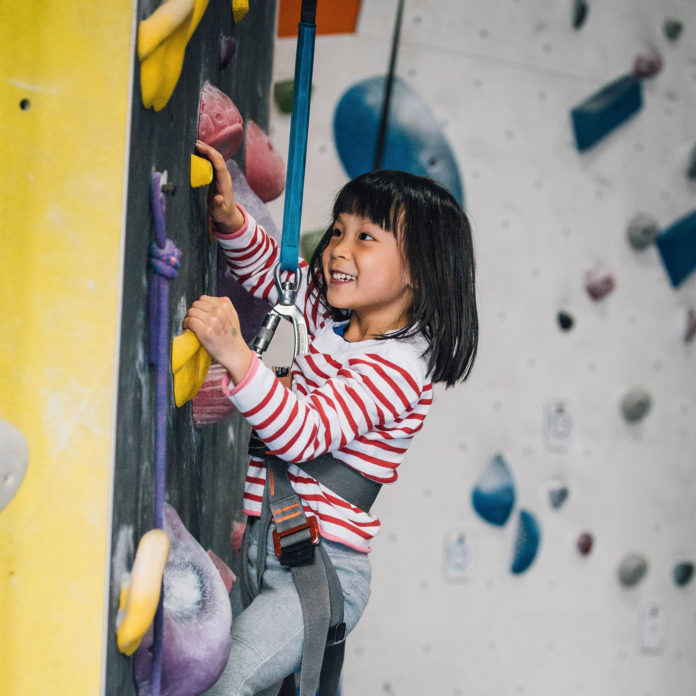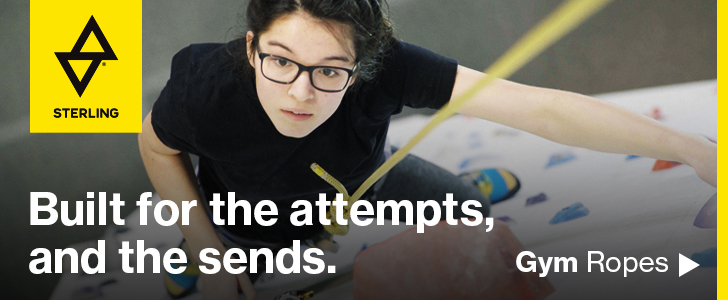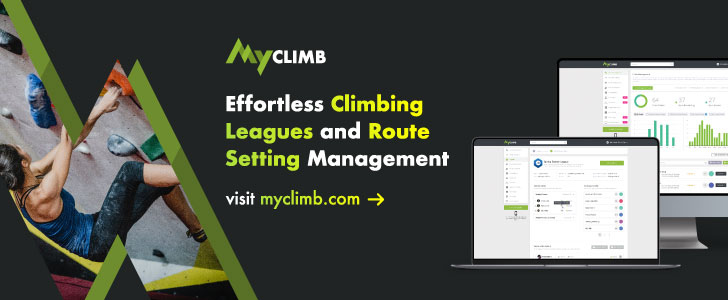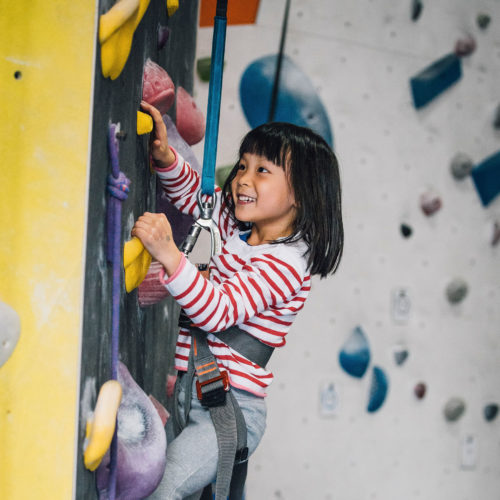
By Zoe Leibovitch
Long term strategic planning is important to the operations of any business, but especially when it comes to youth programming. Increasingly, parents and guardians (referred to as parents throughout this article) are finding new and exhilarating activities for their children and planning further in advance. Even by February and March, many families have already started planning for summer vacations, summer camps and, hopefully, climbing camps. It’s important to realize that your summer climbing programs are competing against all summer programs, not just climbing programs.
In Part 1 of this two-part series, we explore preliminary logistics to consider before diving into a marketing plan (Part 2). Throughout the article, we will share tips for both recreational and elite programs. While the two programs differ in many ways, both programs are essential to retention and development at your facility. With no feeder program, it’s difficult to build an elite team; with no elite program, your feeder athletes will eventually leave the gym.
Below are 7 tips to help you continue the process of building a sustainable and lucrative youth program – for all ages and abilities – during the summer months.
1. Make your programs distinct but co-dependent
It’s imperative to tailor your recreational and elite programs to the proper audience, a principle that applies all year round. Differences between programs should be apparent enough that competitive athletes don’t feel like they’re wasting precious climbing time playing “sharks and minos,” and 6-year-old beginners don’t feel pressured into intensive training regimens.
Touchstone Climbing, which operates 12 gyms throughout California – with 5 more gyms planned for 2020 – shows one size doesn’t fit all by structuring its youth programs according to the specific needs and clientele of each location.
“Some gyms offer one camp that accommodates most ages, and some gyms offer camps that are broken down by age and experience, e.g. Camp 1 and Camp 2,” explained Monica Aranda, Director of Member Services at Touchstone.
While there should be differences between your youth programs, establishing cohesion among them is crucial to long-term success. All programs should still align with the overarching mission of your gym and can share common learning objectives like teamwork, bonding, and passion for the sport. It’s important to consider as well how your recreational program feeds into your elite program. How do climbers qualify for the elite program? Is there an age barrier? Is it based solely on ability and experience (try-outs), or is it exclusive to the competition climbers?
With one of the best youth teams in the country in Team Texas, elite coaches of Summit Climbing, Yoga and Fitness help build long-term success by spending time at the recreational camps during the summer, which still see strong climbers come through.
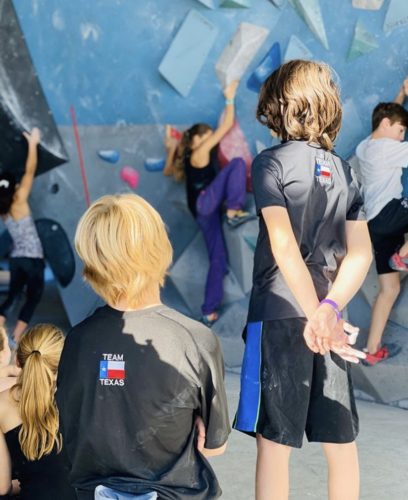
“The audience for our week-long ‘elite camps’ is recreational climbers who already have experience climbing and don’t want to be in a camp with a bunch of beginners. They want to be training and working hard but still want a summer camp experience,” says Marisa Romero, Program Manager at Summit Climbing and a Team Texas coach and alum.
At Stone Summit in Georgia (unrelated to Summit Climbing), the climbers themselves help bridge the gap between the various youth programs by participating in summer camp operations.
“A lot of the older team kids (16+) are the counselors for the recreational camps,” explained Neal Royal, Head Coach at Stone Summit.
Whichever method you choose, remember to establish a relationship between your recreational and elite programs which continues throughout the summer.
2. Provide diverse camp structures
Let’s say you decide to run your summer youth programs from mid-June through late August. You still must consider how to break up those sessions. When setting the dates of your camps, providing a wide variety of formats for participants to choose from can increase the size of your pool of potential customers, and offer a solution to families with jam-packed summer schedules.
Multiple climbing gyms offer several weeklong sessions. Summit Climbing, for example, runs beginner camps on a weekly basis that are structured in a way which also allows them to be transformed into month-long programs.
“We have some kids that just do one week and then others that do the entire summer basically. It’s really up to them,” explained Romero.
For your beginner and recreational programs especially, consider offering half-day and full-day options each week. Naturally, you’ll have psyched beginners that want to be in the gym from 9am to close, while other young climbers will want to enjoy a more leisurely half-day or have other things planned after 1pm. Offering a half day option allows all participants to climb together for a portion of the day.
Movement Climbing & Fitness, with 3 locations between Boulder and Denver, chooses to forego a traditional camp structure altogether. Instead, they offer an extension of their year-long team programs called “summer team”, which maintains a similar schedule to the school year programs. All team levels continue their normal practice schedule throughout the summer, just an hour earlier. The recreational teams continue to practice twice a week; the elite team keeps training for the year-round USAC competition schedule for higher level athletes.
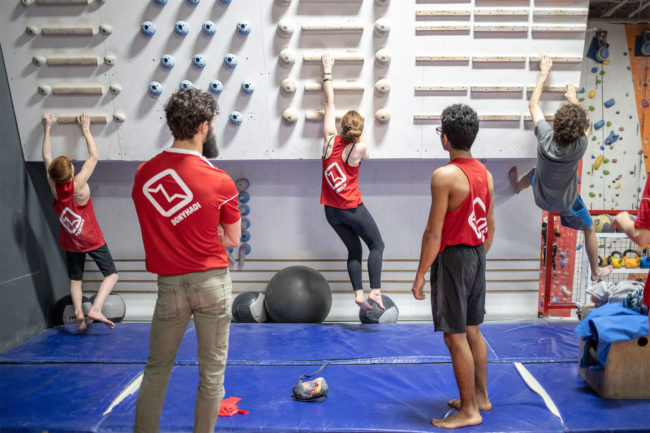
“Though there are no major structural changes in the summer, the coaches add in a lot more games and free time during the summer while the gym is emptier. It’s incredibly simple on the administration end, and team kids are able to freeze membership for 3 months throughout the summer if they choose,” explained Alex Stiger, Programs Director and Co-Head Coach at Movement.
If you’re a gym that desires simplicity, when scheduling your summer programs consider extending your school year youth programs through the summer, as a starting point.
3. Keep the parents at the gym
Across all summer activities, getting parents involved shows commitment to a meaningful experience for their children and a dedication to expanding your mission. It can also be a lucrative strategy for your gym, when executed properly. Not all parents who drop their young climbers off at the gym need to leave right away. Aligning the times of fitness or yoga classes with youth program sessions – or beginning/end of longer sessions – can enable existing members to continue working out in the summer (even with their children out of school) and encourage non-members to stick around and become members.
Back when Scrapyard Climbing Collective was Soaring Ledge Crossfit and Climbing, crossfit sessions were held at the same time as the summer youth climbing program. While their children climbed up to Mario Kart plush toys sitting at the finishing jug holds, multiple parents stayed at the gym and devoted the 90 minutes to muscle ups at the other end of the facility.
Still, even with their older children supervised, it’s difficult to workout when you have toddlers to look after. Offering a childcare program at your gym – both during the school year and summer months – can help solve this problem. Movement Climbing, for instance, provides childcare for up to two hours while parents climb, workout, or do yoga.
“It’s not all of the time, so parents need to plan ahead, but it’s super convenient for a lot of parents who want to get a session in. We offer childcare services at all three locations,” says Stiger.
Similar to Movement, ASCEND in Pennsylvania offers a ‘Child Watch’ service for children six months to 6 years old. Parents can book two-hour time slots in advance online, and Ascend will arrange staff to care for the children in a designated childcare room. In the future, ASCEND even hopes to offer programs for children three to six years old which start teaching them how to move their bodies, in the hopes that they will want to climb one day too.
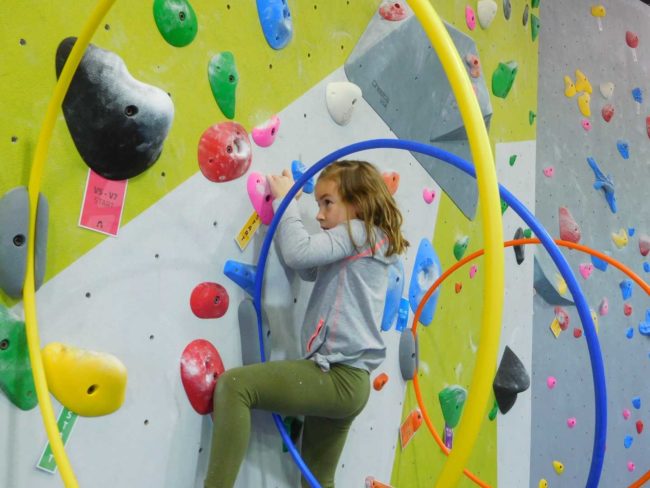
“Our mission at ASCEND is to foster a holistic, community-based climbing and fitness experience. This service can be challenging to manage logistically, but hopefully it shows our commitment to helping families with young children more readily access our community,” explained Jason Gilmore, Director of Youth Programming at Ascend.
One of the logistical challenges you could encounter when it comes to childcare is licensing. Do keep in mind that childcare programs usually require documented approval and licensing from a governmental office. Be sure to check the licensing standards in your state before offering this service at your gym.
4. Be proactive about inclusion
It’s hard to expand your customer base without making inclusion a priority. One of the basic challenges for any youth program is transportation to and from the site. Many families rely on the school bus system to take students to and from school, and that need doesn’t just disappear in the summer. If funds allow, providing a similar service at your gym can help these same students access your summer programs.
Located just outside Boston, MetroRock’s Everett location provides a shuttle service to and from a nearby train stop. Families simply call the front desk and the staff will send over a shuttle. This opens MetroRock Everett’s summer youth program to participants without reliable transportation, and helps families with reliable transportation to avoid Boston traffic.
While a shuttle service can help complement public transportation in larger cities, other gyms in areas without public transportation might find it difficult to drive from door to door. As an additional or substitute service, try facilitating a carpool system for your summer programs. Some parents of the youth in your summer program may not know one another. Be the mediator and help connect families from nearby areas. Consider putting out a “carpool sign-up sheet” at the front desk as climbers enter the gym in the morning. Or, begin the process even earlier by sending a sign-up sheet via email or including one on your website alongside registration.
Another point of concern at full-day summer youth programs is lunch time. Just like during the school year, some students may not come with a pre-packed lunch. Providing a free or reduced lunch option can help remove this barrier. Consider partnering with a nonprofit organization in your area that provides this service. Always check allergies when providing food, though, and perhaps try a “potluck” style lunch where everyone contributes a different dish.
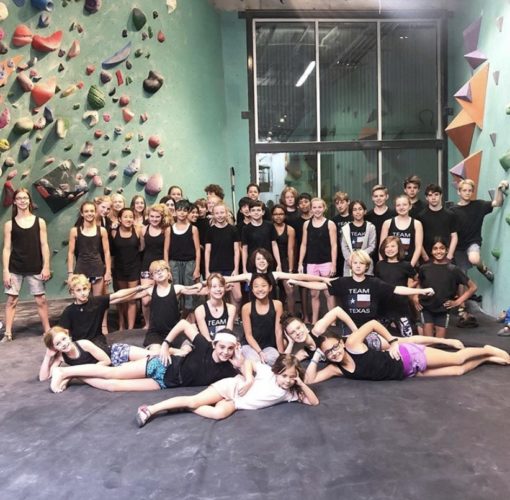
According to Sharon Cooper, Program Manager at The Cliffs LIC, a potluck is a great way to provide a “fun” meal and make sure everyone has something they can enjoy. Similarly, Summit camps offer free lunch to program participants every Friday. Their program managers and coaches treat the last day of the week as a fun-oriented day. Climbers tie-dye shirts, eat pizza, and get small goodie bags to take home. This is something your youngsters can look forward to all week. It also eliminates at least one day of pre-packed lunches when you can provide pizza, sandwiches or other.
5. Offer discounts or scholarships
Even with transportation and lunches solved, there’s no ignoring a major barrier for many youth: the price tag. To make your programs a realistic possibility for families with lower means, consider organizing scholarship programs. Offer discounts to individual climbers or certain school or youth groups in the neighborhood.
Since The Cliffs opened in NYC in 2013, the ClimbUp outreach program has been integral to building an inclusive community at The Cliff’s throughout the school year. Through this program, The Cliffs has partnered with over 15 non-profits and Title 1 schools to provide free climbing.
“If anyone goes to a Title 1 school in Queens, they’re eligible for the program,” explained Cooper. “We cast a wide net, then offer scholarships to get certain kids from ClimbUp to participate in our paid programs.”
The Cliffs relies on honest feedback from coaches to offer scholarships to students who have been particularly influenced by the sport and have a strong desire to continue climbing. Many ClimbUp scholarship students now work at The Cliffs and help coach the competition youth teams. Although this program runs primarily throughout the school year, the same process can be applied to your summer programming.
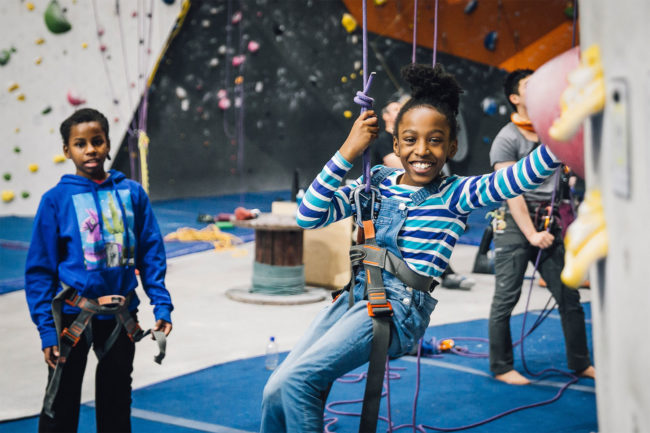
Mesa Rim in San Diego offers similar discounts for underrepresented youth and adults, while staying conscious of profit margins. The gym charges a slightly higher $25 day pass for individuals in order to offer $500 discounted group rates to all non-profits that come in, though they primarily work with the Hazel Foundation.
“They understand that they need a profit margin to accommodate these non-profits, so they work hard to stay within it,” explained Jillian Yatsko, President and Founder of the Hazel Foundation and longtime Mesa Rim employee.
Whether you add “pizza Friday” or an entire scholarship program, be sure to consider inclusion. Then, build these considerations into the structure of your summer youth programs.
6. Acquire permits and partners.
Completing necessary documentation should be number one on your “to-do” list as a program manager or head coach. Without proper certifications, youth programs quickly fail. Janell Thurnauer, Head Coach of The Spot Boulder, perhaps summed it up best:
“Parents want to know that their kids are going to be safe, and be in the hands of people that are safe, so we do everything we can to check all the boxes for that.”
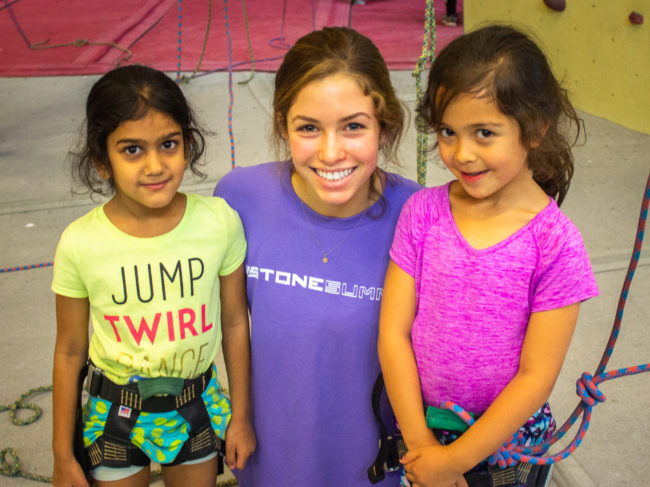
It’s a sinking feeling to see summer campers sit out on a day of climbing because their waivers weren’t completed. Do your part to avoid this. Send out a list of upcoming field trips so parents can start planning well in advance. Whether you’re taking youth outdoor climbing or around the corner for a popsicle, remember you’re taking on an additional liability.
General gym waivers cover a portion of your liability, but be prepared to acquire additional documentation. Your responsibilities depend on how your programs are structured. If you’re overwhelmed and don’t know where to begin, try breaking it down. All campers need to have a completed gym waiver, medical release form and immunization record in most states. Next, consider your indoor campers. Will you take them on field trips? If so, be sure to get permission from parents and have additional waivers for sub-contractors signed far in advance. Will you provide lunches some days? If your gym is feeding climbers more than prepackaged snacks, be sure to check the regulations in your state for dispensing food and beverage and meet any requirements for your gym.
If you’re running an outdoor camp, those campers will likely need additional documentation, and so will the staff in charge. For example, The Spot requires completion of a second waiver form for climbers participating in any outdoor days throughout the summer, which includes transportation permission. Perhaps you’ll hire a guiding service for the trip. Many guiding services have their own liability waiver. Notify families and have all documentation completed before sending their children into the mountains via the 15-passenger van.
If you plan to transport climbers in a bus or a van for field trips, a shuttle service or other, make sure all drivers are covered by insurance and have a clean driving record. In many states, this means drivers must be over 25 years old to be covered. Offering transportation can simplify logistics, but it can also increase liability. Understand the risks involved, and make sure your drivers are covered and transportation permission for passengers is received beforehand.
With each outdoor group, it’s recommended that at least one person in charge is “woofer” certified and the rest are at least CPR and first aid certified. This minimizes liability and offers a safe experience for all campers. If you’re getting on ropes, have at least one staff member who is SPI (single-pitch instructor) certified. Colorado Mountain School offers plenty of courses for local instructors, and there are other schools nationwide which offer a similar service.
If you don’t offer any kind of outdoor program, are your instructors in the clear? The short answer is no. Parents cherish the safety of their children. They want to know their children are in good hands, at the lunch table and 40 feet off the ground. Make sure all your staff are SafeSport certified or hold an equivalent certification. SafeSport provides online training and certifications to help prevent abuse and misconduct within youth sports. Background checks and drug testing at hiring can also help protect your children. These measures reassure managers and parents alike and, most importantly, help build safe summer programs for the participants.
7. Keep it fun.
Finally, climbing is a communal sport that goes beyond technical skill and sheer strength. Youth programs offer a chance for young climbers to expand their understanding of trust, courage, problem-solving and teamwork. The summer can also be a time to pursue your youth program goals in fun ways. Keep in mind, though, the differences between your recreational and elite programs. Your elite team is probably more focused on grip strength than “trust falls;” your rec teams may be better suited to blind-folded climbing games than hangboard training.
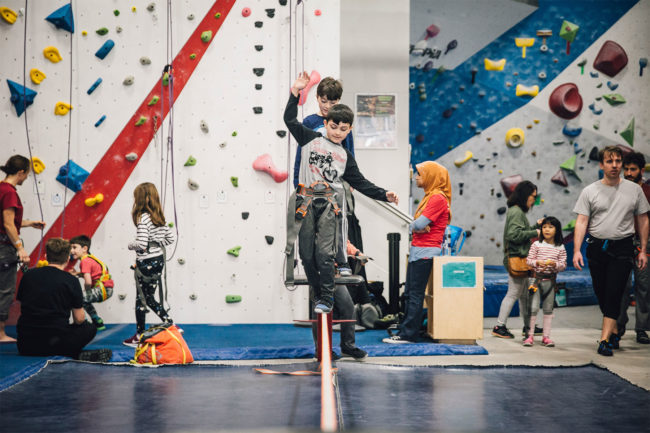
Partner stretching and partner climbing, goal sharing and reflection, journaling and progress logging are just a few fun team-building activities you can offer at all your programs. The Cliffs LIC created “Mission Impossible” to bring its group of young climbers together. Similar to “the floor is lava,” it’s a team building game with the objective being to stay above ground. It forces climbers to apply all the skills they’ve been learning during camp, without them even realizing it.
Here’s how Summit breaks down their camp activities: “The elite camp coaches will choose a certain discipline – sport or bouldering – and focus on that. But it’s a good balance of games, team building and training together. For our recreational camps, its primarily fun-based with just a little bit of skill mixed in. It really takes advantage of the closed gym for most of the program – they build obstacle courses and play tons of games,” according to Romero.
It’s hard to maintain a youthful spirit. Especially as climbing becomes more mainstream, competitive athletes can get lost in their times, rankings, and metrics and forget about the bigger picture. So how do you avoid this? First and foremost, make summer training fun. If you can do this, the line between training and pleasure will fuse, and your elite athletes could stay passionate about climbing through their late teens and, potentially, the rest of their lives.
Words of Wisdom from climbing industry professionals
Marisa Romero (Summit Gyms): “Kids don’t care how much you know until they know how much you care…The biggest thing we focus on at Summit is people over coaching and building relationships with the climbers. Make sure you have coaches that will live by that mentality and uphold it.”
Jason Gilmore (Ascend): “Be the people you want your kids to be. If you want the kids in your program to be focused and hard-working, you need to be focused and hard-working. If you want your kids to be positive and supportive, you need to be positive and supportive. As a leader, you set the tone that others will follow.”
Alex Stiger (Movement Climbing & Fitness): “Choose the simplest options when brainstorming your offerings because it makes the whole system smoother. Then complicate as needed. It’s often more appealing to parents.”
Jillian Yatsko (Mesa Rim / Hazel Foundation): “Put the money where you get the money from.”
Sharon Cooper (The Cliffs): “Listen to your market. We used to try to take city kids outdoor climbing, but it was too far, and the kids are so not used to that that it didn’t sell very well. Stuff like parkour and trapeze have been super successful in NYC.”
Janell Thurnauer (The Spot): “Do everything in your power to create a fun and safe environment for your camps that parents feel comfortable sending their kids to.”
Monica Aranda (Touchstone): “Reach out to local schools and organizations. They can also share their programs with their community. Many times, it’s our members who are teachers at schools who bring in their students for a day of climbing.”
Neal Royal (Stone Summit): “Cast your net far and wide and then see which methods are most effective, and then zero in on those.”
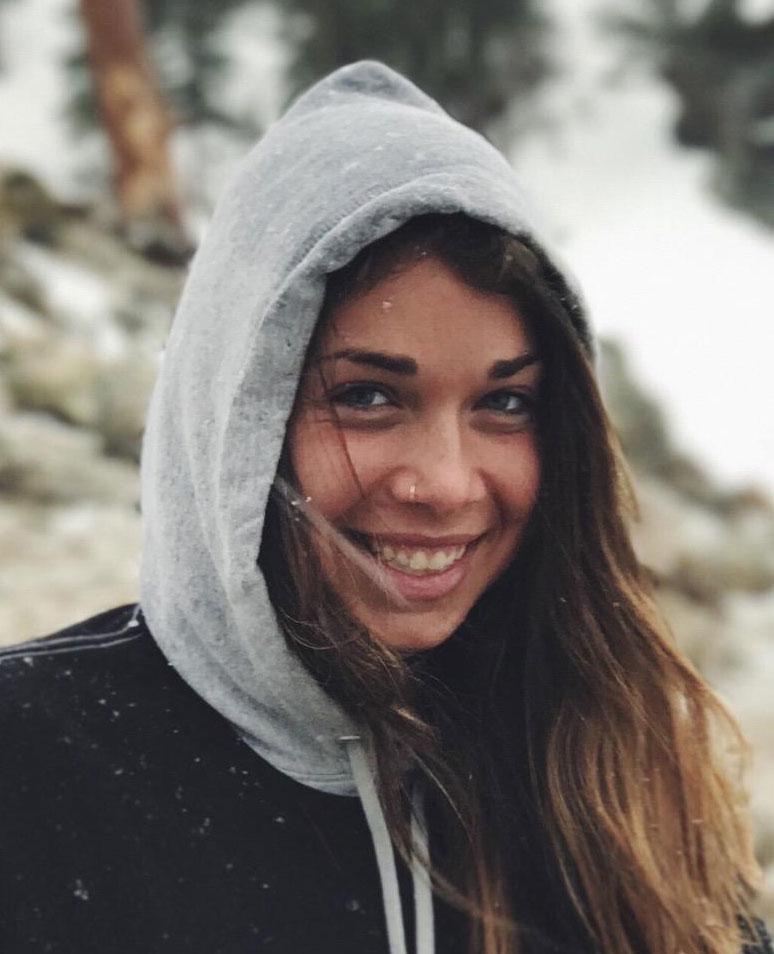
Zoe Leibovitch has been a climbing competitor on the national and international level since 2006. She has traveled the world competing in IFSC events, has been on the Evolv athlete team since 2014, and continues to spread her passion for climbing as a guest setter and coach. She has written for Climbing Magazine and works at The Spot Bouldering Gym coordinating their events and marketing. In addition to climbing, Zoe enjoys snowboarding, surfing, and all things adrenaline-pumping.




